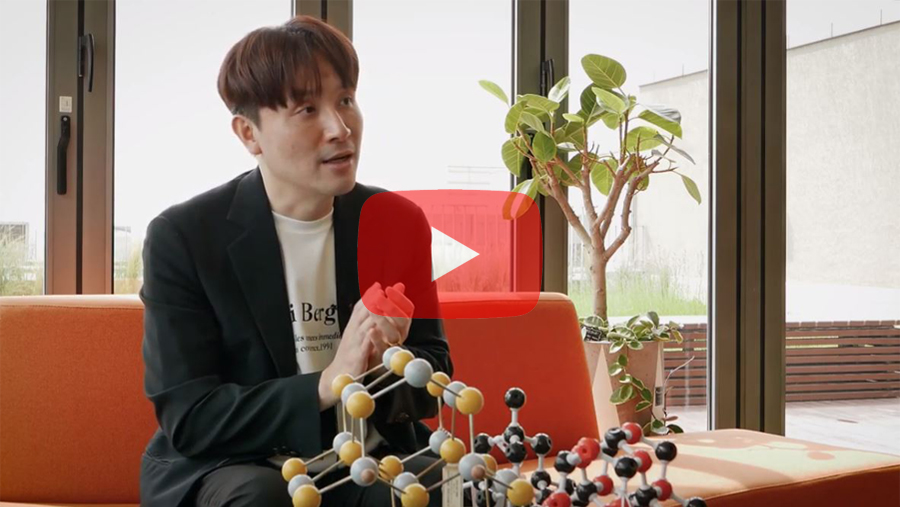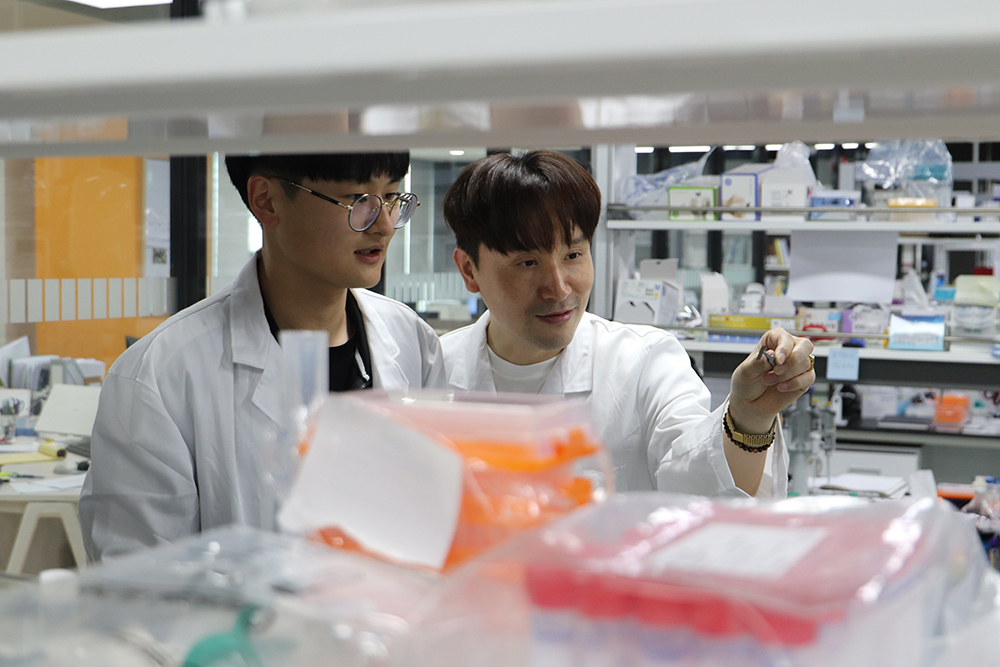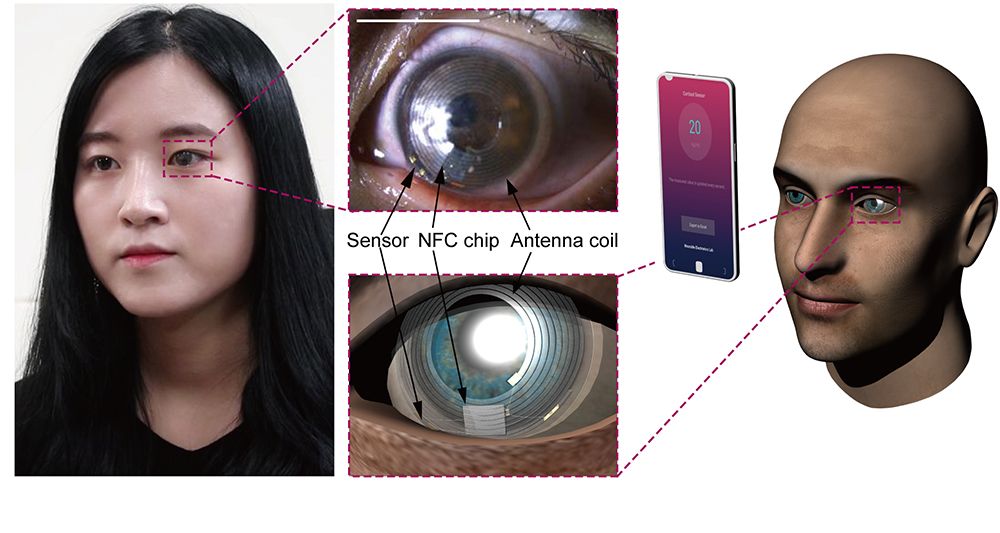주메뉴
- About IBS 연구원소개
-
Research Centers
연구단소개
- Research Outcomes
- Mathematics
- Physics
- Center for Underground Physics
- Center for Theoretical Physics of the Universe (Particle Theory and Cosmology Group)
- Center for Theoretical Physics of the Universe (Cosmology, Gravity and Astroparticle Physics Group)
- Dark Matter Axion Group
- Center for Artificial Low Dimensional Electronic Systems
- Center for Theoretical Physics of Complex Systems
- Center for Quantum Nanoscience
- Center for Exotic Nuclear Studies
- Center for Van der Waals Quantum Solids
- Center for Relativistic Laser Science
- Chemistry
- Life Sciences
- Earth Science
- Interdisciplinary
- Center for Neuroscience Imaging Research (Neuro Technology Group)
- Center for Neuroscience Imaging Research (Cognitive and Computational Neuroscience Group)
- Center for Algorithmic and Robotized Synthesis
- Center for Genome Engineering
- Center for Nanomedicine
- Center for Biomolecular and Cellular Structure
- Center for 2D Quantum Heterostructures
- Center for Quantum Conversion Research
- Institutes
- Korea Virus Research Institute
- News Center 뉴스 센터
- Career 인재초빙
- Living in Korea IBS School-UST
- IBS School 윤리경영


주메뉴
- About IBS
-
Research Centers
- Research Outcomes
- Mathematics
- Physics
- Center for Underground Physics
- Center for Theoretical Physics of the Universe (Particle Theory and Cosmology Group)
- Center for Theoretical Physics of the Universe (Cosmology, Gravity and Astroparticle Physics Group)
- Dark Matter Axion Group
- Center for Artificial Low Dimensional Electronic Systems
- Center for Theoretical Physics of Complex Systems
- Center for Quantum Nanoscience
- Center for Exotic Nuclear Studies
- Center for Van der Waals Quantum Solids
- Center for Relativistic Laser Science
- Chemistry
- Life Sciences
- Earth Science
- Interdisciplinary
- Center for Neuroscience Imaging Research (Neuro Technology Group)
- Center for Neuroscience Imaging Research (Cognitive and Computational Neuroscience Group)
- Center for Algorithmic and Robotized Synthesis
- Center for Genome Engineering
- Center for Nanomedicine
- Center for Biomolecular and Cellular Structure
- Center for 2D Quantum Heterostructures
- Center for Quantum Conversion Research
- Institutes
- Korea Virus Research Institute
- News Center
- Career
- Living in Korea
- IBS School
News Center
| Title | Bioelectronics, the medicine of the future is enabled by nanomaterials | ||||
|---|---|---|---|---|---|
| Name | Communication Team | Registration Date | 2020-09-01 | Hits | 3644 |
| att. |
 thumb.jpg
thumb.jpg
|
||||
Bioelectronics, the medicine of the future is enabled by nanomaterialsIBS People: Research Fellow PARK Jang-Ung of the IBS Center for Nanomedicine “We may not need surgery at all in the future. Nanorobots will scout inside our body and take care of any conditions before they worsen to the level of an illness. The key to this smart device is to have all of its components stretchable.” Research Fellow PARK Jang-Ung of the IBS Center for Nanomedicine (IBS CNM) (also Professor of the Department of Materials Science & Engineering, Yonsei University) studies nanotechnologies to diagnose and treat diseases. “Semiconductors have advanced tremendously, not only in their capabilities, but also shape-wise. They have gotten ever smaller, bendable, elastic and transparent. These characteristics naturally lead to medical applications of electric devices,” says Park. He adds, “Nanomedicine, in close collaboration with traditional biomedicine, is moving forward to benefit humanity.”
Convergence of nanotechnology and medicineThe IBS Center for Nanomedicine seeks to investigate how nanotechnologies and medicine can be integrated, which can be seen as either quite discrete or closely correlated, depending on the point of view. The invention of the patch-clamp technique in the 1970’s is considered the beginning of the history of nanomedicine and it resulted in the 1991 Nobel Prize in Physiology or Medicine. The technique involves pressing a glass micropipette against a cell and the flow of ions then passes through the tube. This enables researchers to study how ion channels behave in various conditions. The journal Nature picked the patch-clamp breakthrough as one of the most extraordinary papers in its over 150 years of history. “Though the patch-clamp marked the dawn of bioelectronics, the technical limitations of manufacturing materials inhibited its medical applications. Its bulky size hardly fit inside the body. Stiff components hindered wearers from moving comfortably,” explained Park. Bioelectronics entered its second golden age with the debut of flexible materials. Park obtained his PhD degree from the laboratory of Professor John A. Rogers at Northwestern University and he did postdoctoral research in Professor Charles River’s lab at Harvard University. Both of the professors are the world’s top authorities in the field. Since then, Park began teaching at the Ulsan National Institute of Science and Technology (UNIST) and moved to IBS CNM. He was attracted to the Center as it allows him to work with experts from various fields for the common goal of realizing the opportunities provided by precision medicine.
A smart lens to monitor stress in real timePark’s research group recently published a notable paper: the group reported a smart lens that is able to accurately measure stress. Being easily affected by our surroundings, stress levels are hard to quantify. Without needing to visit a formal medical facility, the smart lens wearers can measure stress hormone (Cortisol) levels in their tears. By bringing their smartphone close to their eye, the smart lens wearers can check their stress levels via the corresponding mobile app. In 2014, Google announced its smart contact lens project with the aim to measure glucose levels. The Google Contact Lens, however, was far from everyday use since it was composed of a lens as rigid as plastic. Consequently, the Google research group restricted the project’s subjects to euthanized or unconscious rabbits. “We successfully integrated a wearable soft lens with a wireless circuit, thereby creating this smart lens. Our study reported the readings of the subjects who wore the smart lenses. This is the first reporting of quantifying the extent of stress using wearable devices. The key to this successful clinical trial was that we had all of the components be stretchable and transparent,” notes Park.
The age of immediate treatment right after diagnosisThe wearable healthcare industry is surging worldwide. Wearable electronic devices include smartwatches and VR headsets. With the aid of the advancement of semiconductor technology, wearables have been transformed to have curvaceous designs to match the human body, which improves comfort. Still, wearables cannot be personalized to each individual user or changes of posture. This is because it is still technically impossible to make all these materials stretchable enough to work. Park’s group reported a breakthrough approach to such manufacturing challenge in its Science Advances paper last June. Instead of making all components stretchable, they manufactured stretchable electrical wirings, which integrate all of the inelastic components. Using liquid metals, they synthesized nanotube composites. Nanotubes enabled their free-standing features. Then they demonstrated a high-resolution printing method with the liquid metal and its direct reconfiguration into stretchable 3D electrode patterns under ambient conditions. In short, Park’s group presented a novel approach of reconfigurable 3D printing and its application for stretchable integration. “I hope that our group’s research projects enable wearable electronics that are fully reconfigurable to any form and stretchable electronic devices that can be implanted in the body,” says Park. |
|||||
| Next | |
|---|---|
| before |
- Content Manager
- Public Relations Team : Yim Ji Yeob 042-878-8173
- Last Update 2023-11-28 14:20














